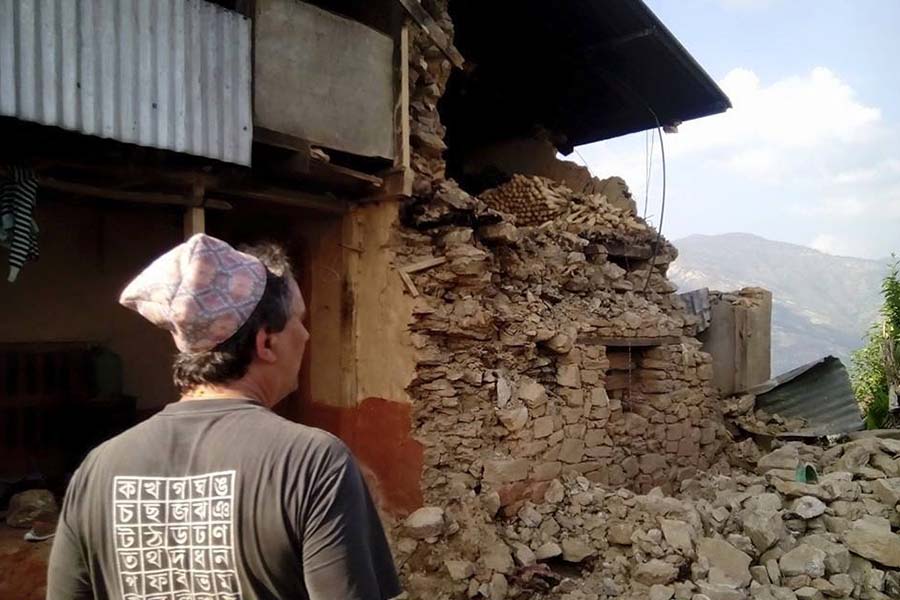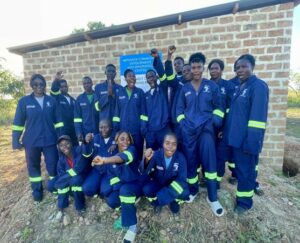by Rabbi Micha Odenheimer, edited from his article in the Jerusalem Post
When I arrived in Nepal last week I was confronted with the full force of the destruction from the earthquake. Hundreds of thousands of village homes in rubble, and with a window of a few weeks until the monsoon rains, time was of the essence.
The last time I had ridden in a car on Shabbat was 25 years before, during Operation Solomon. But the urgencies and uncertainties of the villagers in the hinterland, and the need to act quickly to save lives mandated “Pikuach Nefesh”. Friday night the Israeli staff and volunteers had sung and danced through Kabbalat Shabbat, despite everything. We stopped for a moment to contemplate the words in the traditional Lecha Dodi prayer: “Temple of the King, Royal City, rise up, escape from the midst of the overturning. Too long you have sat in the Valley of Tears, and He will turn His compassion upon you.” The verses were written about Jerusalem, but they seemed eerily applicable to the Kathmandu Valley, with its temples and royal palaces, and its overturning. But it wasn’t yet time for the tears to end.
In the morning we drove an hour and a half and then walked a half hour or so until we reached the village of Mahadev Besi. The village had been the apple of our eye, the jewel in our crown; it was the home of the low caste, marginalized, “Dunwar Rai”, who had lived for centuries fishing a river that no longer had fish. When we had arrived there, in 2008, most of the population of the village was crushing stones by the river where they had once fished for sale as gravel to building materials companies. The women were illiterate, and so shy that they would not look a stranger in the eye; they were not part of the community leadership. There were no toilets in the entire village, and many of the children went to school only sporadically.
We managed to change all that. We channeled water from a turn of the river half a kilometer away, to fields that had previously been dry, and with help from the Foreign Ministry, built a teaching farm. After four years, the villagers were no longer crushing rocks—they earned their living selling vegetables commercially. The women were literate, active, and outspoken, a crucial part of the community leadership. The children were in school. Every home had a bio-gas toilet. But now catastrophe had struck. Women, men and children streamed towards us to hear what we had to say: we spoke to them, told them we would not leave them, that despite everything, the village would be rebuilt. They applauded. We asked if there was anyone there who needed to see a doctor. Nearly everyone raised their hand; during the course of the day, Dr. Sharon, sent through our partner organization Natan, would see 60 patients and more were waiting when we had to leave the area; fevers, diarrhea, upper respiratory infections—the result of the trauma, of living outside, of the fact that once again the village was without toilets.
[testimonial author=”Villager leader in the Dhading district” description=””] “Just the fact that you came to see us means so much to us, you can’t imagine.” [/testimonial]
Most of the houses were completely destroyed—some were cracked, considered unsafe in the meantime. The most urgent need here, as in thousands of villages in the affected areas, was for temporary shelter. The monsoon, when the skies open and rain pours down for hours every day, was due within weeks. People in the city were talking about plastic tarps or tents, but that is not what the villagers wanted. “Tin sheets for roofing will stand up better against the monsoon, and we can use them again when we rebuild our houses,” they told us. “We need the tin, nails, and some tools—the rest we can do.”

On Tuesday teams of staff and volunteers, Nepali, Israeli and American, went out to four village areas we had worked in or were currently working, that were in the hardest hit districts and needed urgent help before the monsoon. We have begun working through the women’s groups, youth groups and farmers groups with whom we already had an intimate connection, and focusing on four areas: shelter, physical health, mental health, and education—with the schools closed for now, it was imperative that the children be kept safe and occupied. Natan sent additional doctors who we deployed with our staff to do mobile clinics in each village in turn. Dr. Naomi Baum, a volunteer from the Israel Center for Psycho-trauma is on the ground training our staff, group leaders from the village, and teachers in healing exercises that would allow villagers to release their fear and stress. Meanwhile, we are recruiting building engineers from Nepal and from Israel to inspect cracked homes that have not fallen and see if they can be salvaged.

Rescue work is just about over, and some international teams have already packed up and returned home. But the monsoon is coming. And after the monsoon, a long winter without permanent shelter. And many, many villages who must reconstruct their homes and their lives while continuing to eke out a living that even beforehand was not sufficient. But the Nepali people are resilient. And Tevel b’Tzedek is here for the long haul #Nepalwillbounceback #Weareheretostay.







